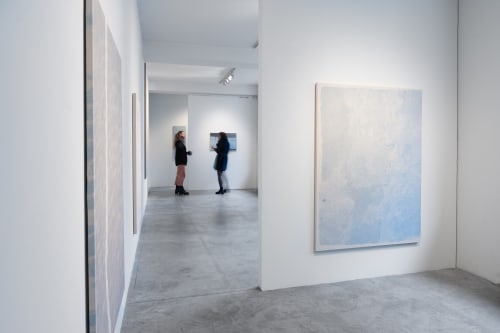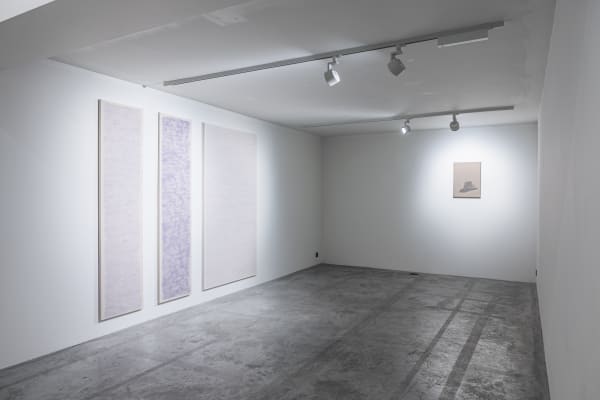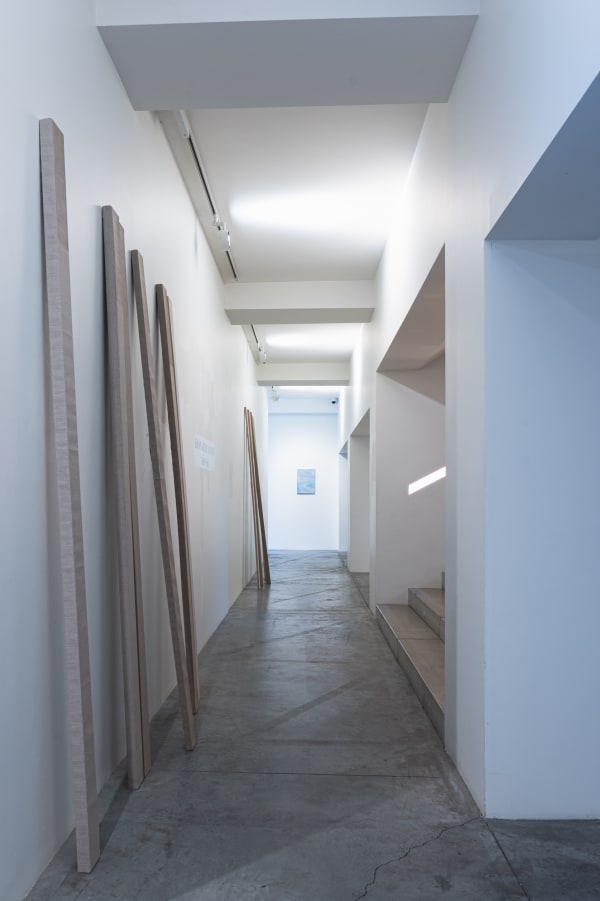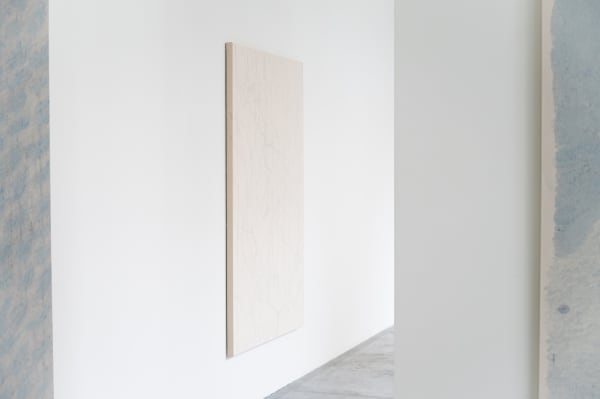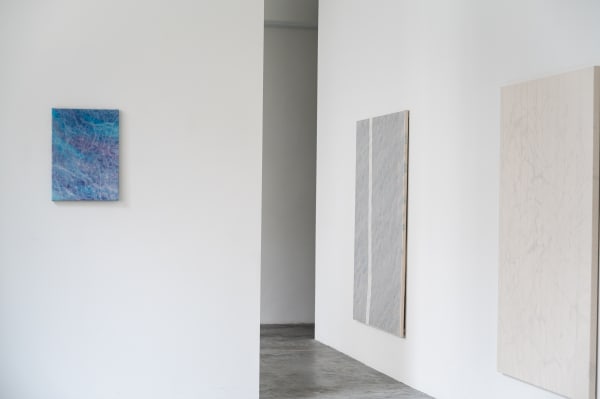SELF-PLAY: HANNAH DE CORTE
Woven picturality
In essence, a painting exists from the moment a canvas is stretched on a wooden frame. Then, this woven structure immediately invites to be covered. It is in this tense moment, just before the canvas becomes a ‘carrier’, that the artist Hannah De Corte intervenes and draws attention to the potential inherent pictoriality of the canvas. In the past, there have been some artists who have allowed the canvas to play a role in the image surface, such as Diego Velázquez, Jackson Pollock, Frank Stella and David Hockney. However, none of them have completely dropped the paint layer and let the canvas speak for itself. As an ambassador of the canvas, De Corte consistently reverses the hierarchical roles of ‘paint on canvas’ and makes the woven cloth the protagonist of her painting. With her work she investigates how the traditional layers of a painting, either ink, paint or varnish, can serve the canvas and playfully unfold its beauty and subtleties. In short, De Corte’s work shows us that the woven cloth is not only functional as an image carrier, but it also reveals its capacity as a medium.
When a viewer first engages with De Corte’s work, (s)he is confronted with an intriguing two-level-viewing experience: from afar one sees a subtle, pastel colored surface, and when approaching, one is pulled towards an accentuated canvasness. For her work, De Corte carefully selects her textile, which she considers the blueprint of her painting. Accordingly, she accentuates the naked canvas either through the application of a simple varnish layer, a frontal individual dot-pattern or by soaking the back with copious amounts of paint and leaving an impressionistic veil in the front. In both the act of stretching and the application of these methods, she always respects the natural course of the woven pattern. Her monochromes, which are seemingly calm from a distance, turn out to be optical color blends generated by the interaction between the vivid inked dots, the diluted acrylic paint or the varnish induced surface-effects on the one hand, with the natural grayness of the canvas on the other.
Win, Lose or Draw is an example of a frontally accentuated canvas-painting in which De Corte meticulously dyed patterns of knots following the woven substance. As a miniaturist, she here pays tribute to the woven aspect of the canvas in that she considers each knot as a mini-surface, a pixel that has been materialized. This method of controlled dyeing not only reveals the structure of the canvas, but also the process of creation and its temporal aspect. Although the artist conserves the literalness of the canvas in her painting, the combination of colored dots and intervals of natural canvas creates a pointillistic image which causes a fringing effect that is hard to bring into focus and to hold on once’s retina.
A second type of work is illustrated by Wanderer I. Here, the canvas-painting is accentuated through the process of impregnation of acrylic paint from the back. The result is a new picturality which could be considered to be both an extension and an inversion of the one developed in the works of Helen Frankenthaler and Morris Louis: De Corte not only omits the body of the paint like her predecessors, but she positions the canvas as top layer by turning it into a sieving barrier, which determines the amount of paint becoming visible on the front. In doing so, the artist pays tribute to the never-exposed rear surfaces of paintings.
The pinnacle of De Corte’s canvas paintings is Wanderer IV, where she combines both the frontal dot pattern and the back-soaking techniques to generate an optical 3D-experience. Here, the effect of space projecting forward comes about through a Newmanesque interruption of the frontal dyed pattern, while the colored veil of the impregnated paint from the back is all-over the canvas. However, once the double-sided approach in this work is grasped, one visually ‘feels’ the thinness of the woven structure, which ensures the literalness of the canvas.
In her work, De Corte has introduced a new form of painting that investigates the rearrangement of the conventional layering of the medium in order to emphasize its canvasness. In doing so, she retraces and extends the long evolution towards the ‘essence’ of painting.
- Stefanie De Winter.
